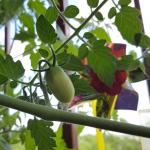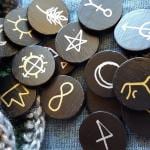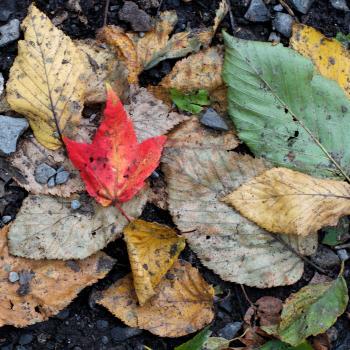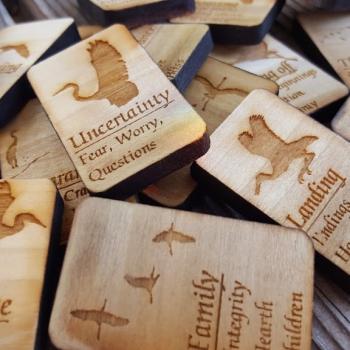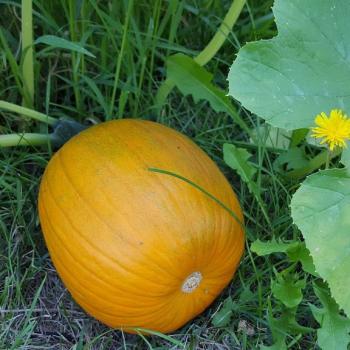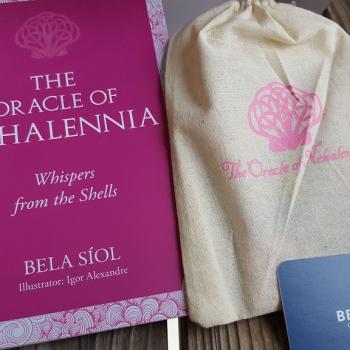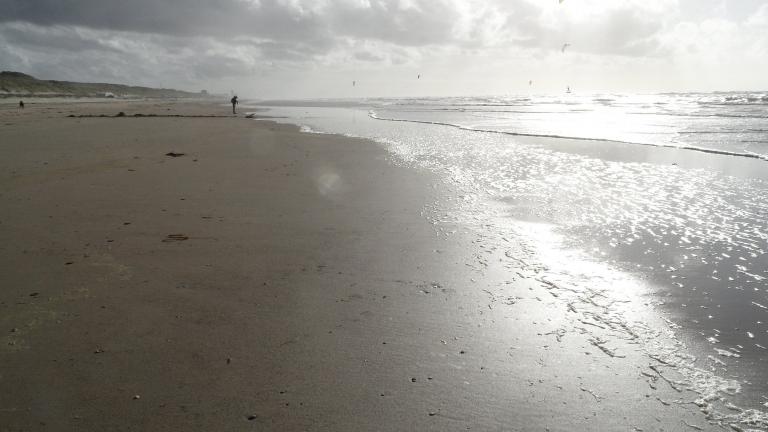
Beginning sometime near the second century BC, the Goddess Nehalennia was honored where the Rhine river met the North Sea. Votive inscriptions and numerous altars were dedicated to Her, and temples built in Her honor. Sometime after the third century CE, Her temple was covered by the ocean, where it rested undisturbed for more than a thousand years.
In 1645, a storm on the coast of Zeeland eroded away the land and unearthed Her temple once again. Since then, the altars, inscriptions, and offerings to Her have been studied carefully, archaeologists attempting to rediscover Her secrets. Not only that, but She has managed to recapture the imagination of the local populace. A new temple to Her was built in the town of Colijnsplaat in 2005.
Nehalennia
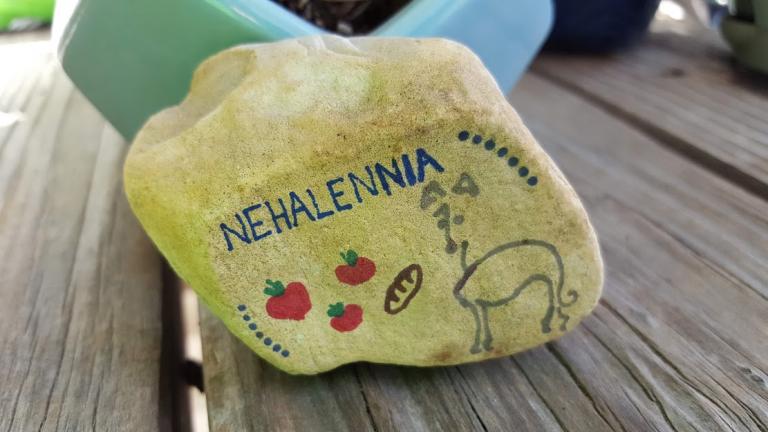 What’s in a name? Often, there’s some information about the attributes of a deity to be found in Their name. From Nehalennia, we know that She is likely either a Germanic or Celtic Goddess. That’s where the agreement of scholars ends. Rudolph Simek in his Dictionary of Northern Mythology gives a possible etymology as relating to the Latin verb ‘necare’ which means ‘to kill’.
What’s in a name? Often, there’s some information about the attributes of a deity to be found in Their name. From Nehalennia, we know that She is likely either a Germanic or Celtic Goddess. That’s where the agreement of scholars ends. Rudolph Simek in his Dictionary of Northern Mythology gives a possible etymology as relating to the Latin verb ‘necare’ which means ‘to kill’.
Kauffmann believes it relates to *neu, a word for ship. This relates to many of the inscriptions found dedicated to Her, which tend to be merchants thanking Her or petitioning Her for safe passage across the sea. There are also frequently boats depicted on Her altars. There is no clear translation or etymology for Nehalennia, however.
Iconography
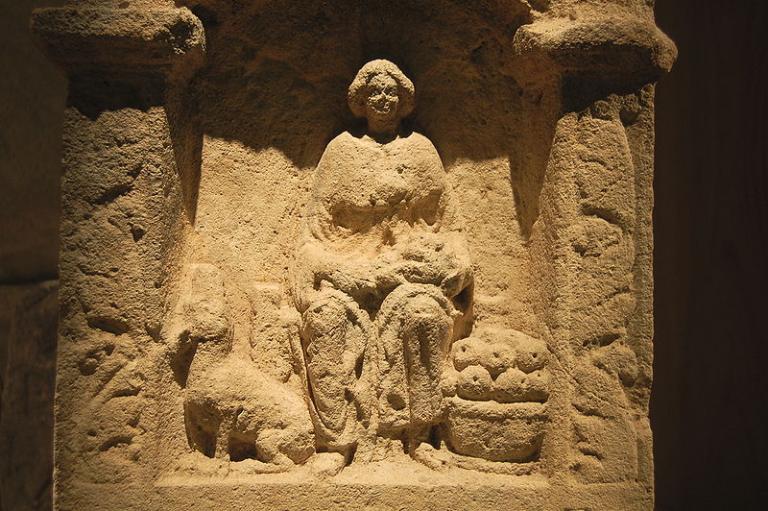
On the votive inscriptions that have been unearthed, there is a great deal of symbolism associated with Nehalennia. The most popular seems to be fruits and verdant growing things. Baskets of apples frequently appear next to Her or in Her hands, and fruit trees and growing vines cover the sides of many of the votive altars. This fits with Her as a Goddess of merchants: peace and prosperity are ideal when your occupation is buying and selling goods.
Interestingly, there are a few other symbols frequently associated with Her. One of these is a dog, a greyhound-like animal. It is frequently depicted sitting at Her feet, looking up at the Goddess. Rudolph Simek connects this iconography with a goddess of the dead. Hilda Ellis Davidson in her Roles of the Northern Goddess argues that the dog is often depicted alongside mother Goddesses, particularly in the Roman period in Celtic areas. I personally believe this interpretation makes more sense with the rest of Her iconography, but there is an interesting connection there.
Nehalennia is sometimes depicted with Her foot on the bow of a ship. This makes sense with the inscriptions, She is clearly seen as having some authority over whether or not ships make it safely across the North Sea. The sea and specifically sea-trade is associated with prosperity in the same way Njord is associated with both prosperity and the sea.
Perhaps most interestingly, She is also sometimes depicted with loaves of bread. Not just any loaf of bread, however. Davidson identifies them as duivekater, a type of sweet bread that is made in the shape of a bone to approximate an animal sacrifice to a deity. It seems Nehalennia was a fan of this type of offering; raising again the question of Her connection with death.
Vanic Connections
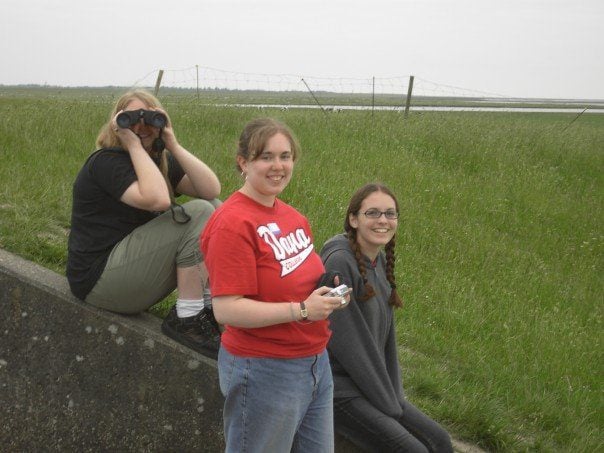
As someone who honors primarily Vanic deities, I see many connections here. The association with ships and the sea is reminiscent of both Njord and Frey. Her additional links to prosperity bring Them both to mind as well. Nehalennia’s possible link to death through Her name and the hounds that accompany Her reminds me of both Freya and Nerthus. Freya, as chooser of the slain and Vanadis, and Nerthus, to whom slaves were offered by drowning, both have strong death connections.
Obviously, the only attested Vanir are Njord, Freya, and Frey. But there are interesting connections to other deities. If the distinction is important to you, it’s worth investigating Nehalennia.
Modern Day Worship
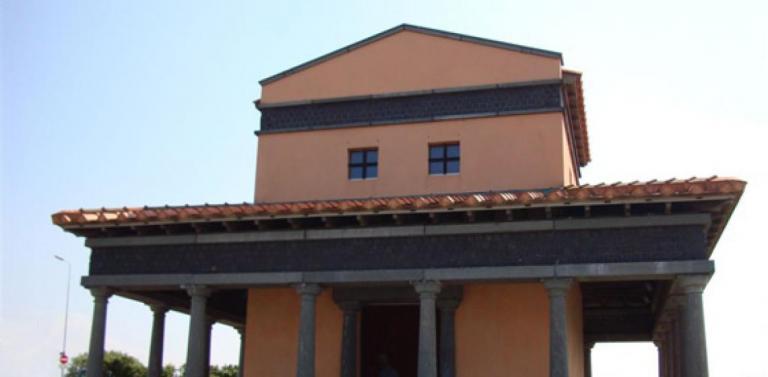
Nehalennia is certainly not as popular as the most recognized gods of the Germanic pantheons, but She has a following today. One of the more prominent figures is Bela Síol, a Pagan priestess from Brazil. She has had a relationship with Nehalennia for ten years now, and has created an oracle based on Her symbology specifically for communicating with Her.
There is also a temple to Her in Colijnsplaat in the Netherlands. The website is in Dutch, but there are many beautiful pictures of the reconstructed temple. If you’re ever in the area, it’d be a fantastic pilgrimage site for any who honor Nehalennia.
I have been honoring Her casually for a few years now. I’ve found that She appreciates gifts of fruits and other little sweet things. She was especially pleased the day I baked the duivekater and offered Her a slice. For me, She is strongly associated with the sea, especially the North Sea. I was lucky enough to visit there a long time ago, and when She speaks to me, it is always with the feel of that place. I find it interesting that it was an ocean storm that uncovered Her temple – perhaps She wanted the world to see Her once again.


